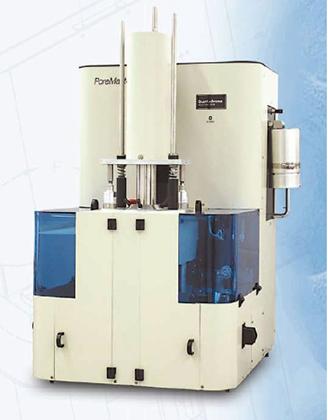Mercury intrusion porosimetry
The mercury intrusion porosimetry is based on the physical principle that a non-reactive and non-wetting liquid will not penetrate the fine pores until sufficient pressure is not applied to force its entry. Porosimeter Quantachrome Poremaster 60GT allows measuring the pore size and the pore volume distribution in the range of pores from 0.5 mm to 1.8 nm. The device is used for qualitative and quantitative characterization of porous materials, e.g. powders and composites.
Mercury intrusion porosimetry is standardized in the following standards:
• ASTM D4404-18 Standard Test Method for Determination of Pore Volume and Pore Volume Distribution of Soil and Rock by Mercury Intrusion Porosimetry;
• ASTM D4284-12(2017)e1 Standard Test Method for Determining Pore Volume Distribution of Catalysts and Catalyst Carriers by Mercury Intrusion Porosimetry;
• DIN 66139 Pore size analysis – Representation of pore size distributions;
• ISO 15901-1 Evaluation of pore size distribution and porosity of solid materials by mercury porosimetry and gas adsorption — Part 1: Mercury porosimetry;
• BS 7591-1:1992 Porosity and pore size distribution of materials – Method of evaluation by mercury porosimetry.


 contact
contact